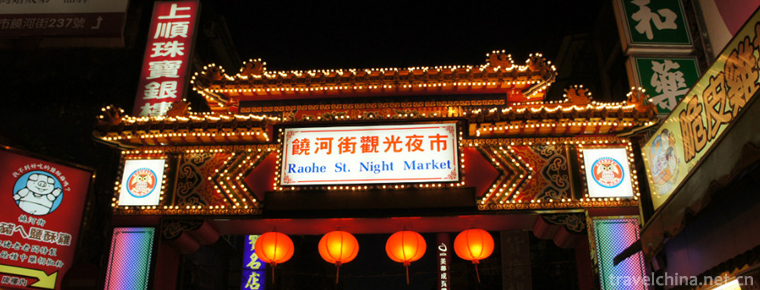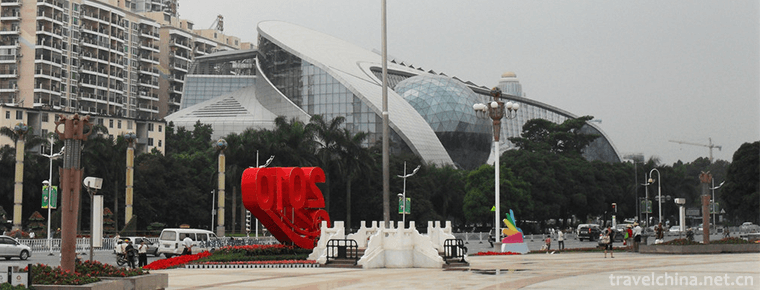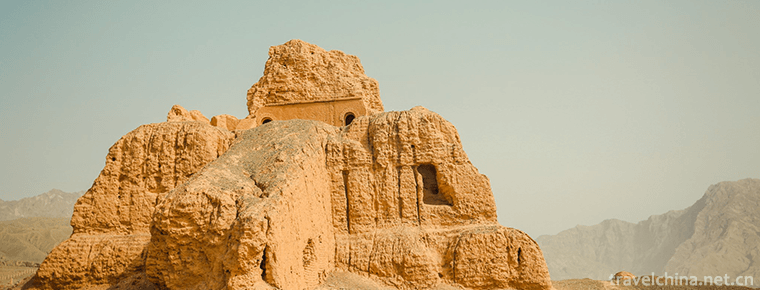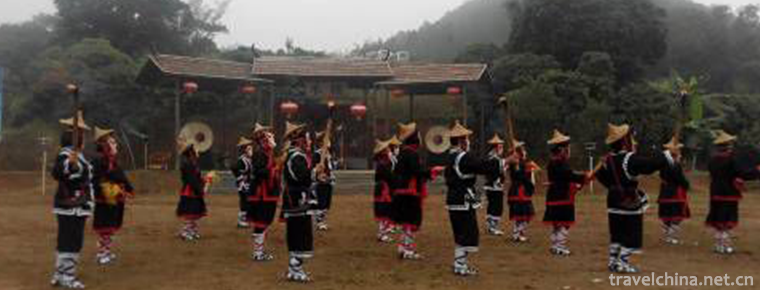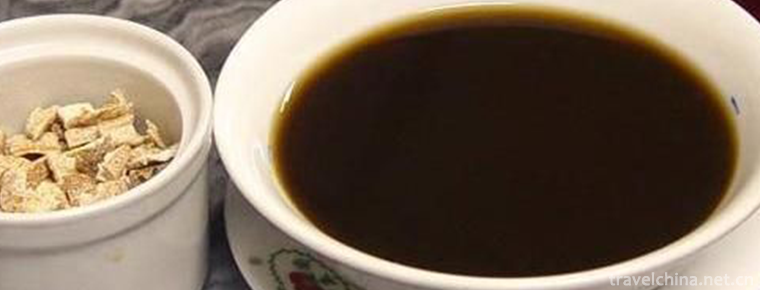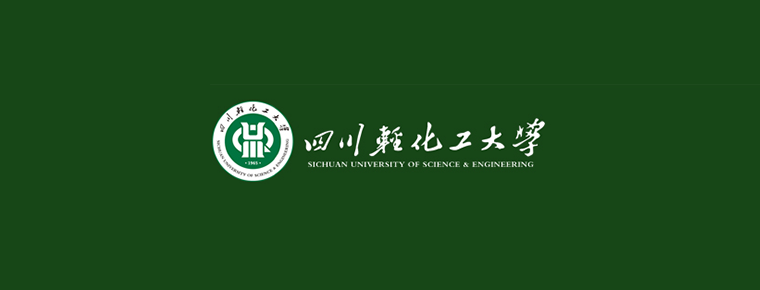Zhao tomb in Qing Dynasty
Zhaoling Tomb of Qing Dynasty, the mausoleum of Taizong Emperor Taiji, the founding monarch of the second generation of Qing Dynasty, is located in the ancient city of Shenyang (Shengjing), about ten miles north of China, so it is also called "Beiling". The cemetery covers an area of 160,000 square meters. The layout of the building follows the principle of "the former dynasty and the latter" and consists of the former, the middle and the latter three parts from south to north. The main buildings are built on the central axis and arranged symmetrically on both sides, which imitates the imperial mausoleum of the Ming Dynasty and has the characteristics of the Manchu mausoleum.
Zhaoling Mausoleum in Qing Dynasty is the tomb of Emperor Tai Chi of Emperor Taizong of Qing Dynasty and the Tomb of Xiaoduan Wenboerji Jite. In addition to the empress, Zhaoling Mausoleum also contains a number of queens, such as the Imperial concubines of Lintoe Palace and Shufei of Suqing Palace. It is the most representative imperial mausoleum in the tombs outside Guanwai of the early Qing Dynasty and one of the most complete preserved ancient Imperial Mausoleums in China.
In 1982, the Qingzhaoling Tomb was announced by the State Council as the second batch of key national cultural relics protection units.
Historical evolution
The Zhaoling Tomb of Qing Dynasty was initially built from the eighth year of Chongde (1643) to the eighth year of Shunzhi (1651). It was named Zhaoling on August 9, the first year of Shunzhi (1644). The emperors of Kangxi, Qianlong and Jiaqing also made some additions and improvements.
In the 16th year of the Republic of China (1927), the Fengtian Provincial Government at that time established the Qingzhao Tomb as a park, namely Beiling Park.
In September 1963, the Qingzhaoling Tomb was listed as a key cultural relic protection unit in Liaoning Province.
In 1982, the State Council promulgated the Qingzhaoling Tomb as a national key cultural relic protection unit.
On July 1, 2004, Qingzhaoling and Shenyang Palace Museum, Shenyang Fuling and Fushun Yongling were formally listed on the World Heritage List by the vote of the 28th session of the World Heritage Committee.
Site characteristics
architectural composition
The Qingzhaoling Tomb was built on the flat ground. The main buildings are located on the central axis. The other buildings are symmetrically distributed on both sides of the central axis. Zhaoling is composed of three parts.
The first part: dismount the stele to Zhenghongmen. The main buildings are Xiama Stele, Shishi, Huabiao and so on. The dismounting tablet is the symbol of the feudal hierarchy. At the dismounting tablet, according to the rank of superiority and inferiority, officials must dismount from the sedan chair and walk on both sides. There are also exquisitely carved stone lions and watches on both sides. Not far from Shiqiao is Shipaifang, located in the middle of the road leading to Zhenghongmen, on which vivid images are carved. It is a treasure of Qing Dynasty carvings. Passing through the stone archway is the Zhenghongmen, the gate of the mausoleum, and the courtyards on both sides are the dressing Pavilion in the East and the sacrifice Pavilion in the west.
The second part: Zhenghongmen to Fangcheng. The main buildings are gorgeous. Shishi, Shiqilin, Shima, etc. Huabiao is a unique building in ancient China. Its origin and Yao's "defamatory wood" for people to leave messages, has now evolved into a building decoration. Stone statues are all kinds of stone carvings, which were originally used to exorcise evil spirits, and later became the symbol of the status of the deceased. The stone lion represents the king, authority and nobility. Stone Otter represents the ruler's justice and righteousness. Shi Qilin, an auspicious beast, hopes that peace and prosperity will last forever. Shima is Huangtaiji's favorite mount. In front of the pavilion is the Stele Pavilion, with the "Zhaoling Divine Gong Sheng De Monument", which records the merits of Huang Taiji's life.
The third part: Fangcheng, Baocheng and Crescent City. The opposite of the stele Pavilion is Longmen Gate, which is Fangcheng after Longmen Gate. It is the main building of Zhaoling. Longmen Hall resides in it, followed by Ming Building, with supporting halls on both sides and corner towers on all sides. After the Ming Lou, it is Baocheng. Under it is the palace where the Huang Taiji couple are buried.
Architectural features
As emperor's mausoleum, the overall layout, single buildings and decoration of Qingzhao Mausoleum are complete and unique. It not only absorbs a large number of Central Plains emperor's mausoleum culture, but also maintains its own national characteristics. It integrates the Han, Tibetan and Mongolian architectural cultures with Manchu architectural cultures skillfully, forming a unique style different from those of Guanneming and Qing emperor's mausoleums. It is the essence of ancient Chinese architecture and a model of multi-ethnic cultural exchange.
Historical culture
Aixinjuro Huangtaiji
Aixinjueluo Huangtaiji (November 28, 1592 - September 21, 1643), the Emperor Taizong of the Qing Dynasty (1626 - 1643 in power), was translated into Huang Taiji and Hong Taizhu. The eighth son of Qing Taizu Aixinjuro Nurhachi, an outstanding strategist and politician in the early Qing Dynasty, and the second sweat in the Later Jin Dynasty, was also the Mongolian sweat and the founding emperor of the Qing Dynasty.
Chongde first year (1636), in Shengjing (now Shenyang) called the emperor, the founding of the Qing Dynasty, and forced Lee's Korea to submit to the Qing Dynasty. During the Songjin War in Chongde in 1642, Hong Chengchou was captured by students. Since then, the elite outside the Ming Dynasty had been lost. The Ningjin defense line collapsed completely, and the entry of the Qing Army into the Customs had become an inevitable trend. In the eighth year of Chongde (1643), Huang Taiji died suddenly on the eve of the Qing army's entry into the Customs, failing to realize his long-cherished wish to seize the national regime.
Huang Taiji reigned for 17 years. During his reign, he developed production, strengthened troops and fought against the Ming Dynasty continuously, which laid a solid foundation for the rapid expansion of the Qing Dynasty into the Central Plains in the next stage. The temple was named Taizong, and the prophet was buried in Zhaoling, Shenyang.
Tomb number
Ancient Imperial Mausoleums have their own names. The origins of these mausoleums either reflect the summary and praise of the emperor's lifelong achievements, or have the meaning of auspiciousness and blessing. The mausoleum names of the Qing Dynasty were generally ordained by the heir emperors. Secondly, there was a system in the Qing Dynasty. If the names of mausoleums and places were duplicated, the names of places had to be changed, which was called taboo.
Zhaoling was identified by the cremation of Zigong Palace on the first anniversary of the death of Taizong in early August of the first year of Shunzhi. There are two different explanations for the origin of Zhaoling Mausoleum. One is that it imitates the Zhaoling Mausoleum of Li Shimin, Taizong of Tang Dynasty, and the other is related to the ancient Zhaomu system.
Secondly, it is inappropriate to say that Zhaoling came from Zhaomu system. Zhaomu is an ancient patriarchal clan system. This system is used for the arrangement of tombs and the arrangement of species of temples. 9 Its law is centered on the ancestors, and the other generations are analogized in the order of Zuo Zhaoyoumu. Shengjing has three mausoleums, Yongfu and Zhaoling. One of them is the ancestral mausoleum, ranking the highest, followed by Fuling and Zhaoling. If arranged according to Zhaomu system, Yongling should be in the middle, Fuling in its left (east) is called Zhaomu, Zhaoling in its right is called "Mu". The current Yongfu Zhao Tombs, Yongling in the east, Fuling in the middle, Zhaoling in the west, the three mausoleums can not form a Zhaomu relationship at all.
The name of Zhaoling may be due to the choice of the meaning of the word Zhaoling itself. Ancient people interpreted Zhaozi as "highlighting" and "highlighting". The meaning of Zhaoling Mausoleum Name is to show Taizong's literary virtue and martial arts to the world, and make it show the later meaning.
Sacrificial activities
Sacrificing ancestors is a fundamental activity in Zhaoling. Its name is divided into "big sacrifice", "small sacrifice", "emperor's East tour sacrifice" and so on.
Grand Sacrifice: The Zhaoling Mausoleum holds seven grand sacrifices every year. Time is Qingming, Zhongyuan, October Shuo, Winter Solstice, New Year's Eve, Taizong's Deathday and Xiaoduanwen's Queen's Deathday. Among them, Qingming, Zhongyuan, Winter Solstice and New Year's Eve, also known as the "Four Seasons Festival", are the highest, most cumbersome and abundant sacrificial handles.
Qingming: During the Ming and Qing Dynasties, the Qingming Dynasty was used as the time for the celebration of the mausoleum sacrifices. The most distinctive scene of the Qingming Festival is the "earth laying ceremony". The so-called earth-laying ceremony is to add earth to the top of the treasure.
Zhongyuan: The ancients used the fifteenth day of the first month as "Shangyuan", the fifteenth day of July as "Zhongyuan", and the fifteenth day of October as "Xiayuan". The ancients used Zhongyuan Festival as a day of sacrifice to go to the grave and sweep the grave. The Ming and Qing dynasties have made the "Zhongyuan" the day of the sacrificial ceremonies.
Winter Solstice: Winter Solstice is also a natural solar term, which takes place around the end of November.
Tomb of the Year: Tomb of the Year refers to the end of the year. Chongde two years have seen the record of "sending officials to offer sacrifices to Fuling" and "using one cow" at the end of the year. Zhaoling held its first annual festival in December of the first year of Shunzhi.
October Shuo: October Shuo is the first day of October. Folk proverbs say, "On October 1st, send cold clothes." Cotton-padded clothes should also be sent to the deceased ancestors to prevent cold. In addition to the normal sacrifices, the October New Year Festival also burns "cold clothes". The so-called "cold clothes" are made of leather, cotton, sheets and various kinds of clothes made of various colors of paper.
Deathday: Deathday is the crash day of emperors and queens. Although the anniversary is also a big sacrifice, because it is the day of national funeral, the sacrifice must have a funeral atmosphere. The sacrificial sweepers should wear filial piety clothes, and there are some "inappropriate" provisions.
The Zhaoling Mother's Day Festival is held twice a year, once on the 9th of August, the funeral day of Emperor Taiji, and then on the 17th of April, the funeral day of Empress Xiaoduanwen.
Small sacrifices: Small sacrifices are also called "regular sacrifices" and "Shuo Wang sacrifices", which are held on the first and fifteen or twelve days of each month. Zhaoling has twenty-two small sacrifices every year.
The traditional concept of respecting the heavens and fathers of the rulers of the Qing Dynasty is very deep. In their view, everything they own is given by their ancestors, and even their fate is restricted by their ancestors'spirit in heaven. Based on this concept, they have great respect for Zuguang's mausoleum, ancestral relics, relics, and even his native place. Especially for Shengjing, which was the place where the Qing Dynasty was founded and where the mountains and mausoleums were. The main purpose of the Qing Emperor's Eastern Tour was to offer sacrifices to ancestors'mausoleums. Its ancestor worship is the most grand and the ritual system is the most solemn. The emperor's personal sacrifice to Zhaoling is usually held in two days (with the exception of Emperor Kangxi). On the first day, the "Exhibition Ceremony" is held, and on the second day, the "Grand Duan Ceremony" is held. The two kinds of sacrifices are different.
Other sacrifices: In addition to the large and small sacrifices held annually in Zhaoling and the temporary announcement of the Emperor's Eastern Patrol, several other sacrifices are also held for other purposes, such as the annual "Longevity Sacrifice" held on the birthday of the Emperor or Empress Dowager, the announcement sacrifice for the Empress Dowager's emblem, or the triumphal march to the Mausoleum, or the imperial son's visit every three years. In addition, there are officials passing through Shengjing or going to Shengjing. The newly appointed officials will also pay homage to Zhaoling and so on.
Traffic information
Address: Qingzhaoling is located at No. 12 Taishan Road, Huanggu District, Shenyang City, Liaoning Province.
Shenyang Metro: Beiling Park Station, Line 2 (Exit E)
Shenyang Bus:
Beiling Park Station 130, 136, 205, 210, 213, 217, 220, 227, 231, 242, 245, 290, 398 routes, tourist line
Jinshan District Station 130, 131, 157, 205, 210, 220, 227, 231, 242, 245, 280, 281 roads
Tesco (Provincial Experimental Middle School) Station 106, 138, 231, 232, 294, 326 routes











-
Raohe Street Night Market
Raohe Street Night Market is located in Raohe Street.
Views: 498 Time 2018-10-12 -
Guangxi Science and Technology Museum
Guangxi Science and Technology Museum is located in Nanning National Avenue. It was established in March 2006 and started construction in December. It covers an area of 14655 square meters.
Views: 352 Time 2019-01-13 -
Subashi Buddhist Temple Site
Subashi Buddhist Temple Site , also known as Zhaohuili Temple, is located in the south foot of the Queletag Mountains in the northeast of Kuqa County, Xinjiang. It is a national key.
Views: 158 Time 2019-02-13 -
Carrying a number
Handling trumpets is one of the trumpets of traditional folk songs. It is popular in many fields, such as manual workers, such as loading and unloading, lifting, pushing and pulling goods..
Views: 462 Time 2019-04-03 -
Construction Techniques of Wood Construction of Dong Nationality
Dong's wood construction and construction skills, the traditional architectural skills of Sanjiang Dong Autonomous County, Guangxi Zhuang Autonomous Region, one of the national intangible cultural her.
Views: 212 Time 2019-04-28 -
Wo Lou dance
Helou Dance is a traditional folk entertainment program in Yunan County, Guangdong Province. It is called "living fossil" in traditional dance. Helou Dance is the product of.
Views: 139 Time 2019-05-02 -
Printing and Dyeing Techniques of Blue Printed Cloth
The printing and dyeing technology of blue printed cloth is a kind of anti-dyeing and printing method of indigo printed cloth. The dye is extracted from Polygonum multiflorum..
Views: 230 Time 2019-05-11 -
Herbal tea
Herbal tea is the general name of traditional Chinese herbal medicinal plant beverage. Guangdong herbal tea is the representative of traditional Chinese herbal tea culture. Herbal tea is a kind of bev.
Views: 193 Time 2019-05-13 -
Sichuan University Of Science and engineering
Sichuan University of Light Chemical Industry is a general full-time university with more than 50 years of undergraduate and nearly 20 years of postgraduate education, which has coordinated developmen.
Views: 228 Time 2019-08-31 -
Neijiang in yuan Ming and Qing Dynasties
In 1279, China was unified and the Yuan Empire was established. After more than 30 years of war between the end of Song Dynasty and the beginning of Yuan Dynasty, the system of Zizhou and Puzhou has not been restored except Jianzhou. In the 22nd .
Views: 281 Time 2020-12-16 -
Guangan waterway
Guang'an port is a "port group" composed of Guang'an port area, Huaying port area, Yuechi port area and wusheng port area distributed in Guang'an section of Qujiang River and Jialing River. Guang'an port is an important support for industrial lay.
Views: 361 Time 2020-12-19 -
History of Dazhou
Dazhou area belonged to Liangzhou in Xia Dynasty and Yongzhou in Yin Dynasty. The earliest indigenous people were the Cong people, who established the state of Cong (now tuxi Town, Quxian county). In the early Warring States period, Ba people migrated fro.
Views: 204 Time 2020-12-20
